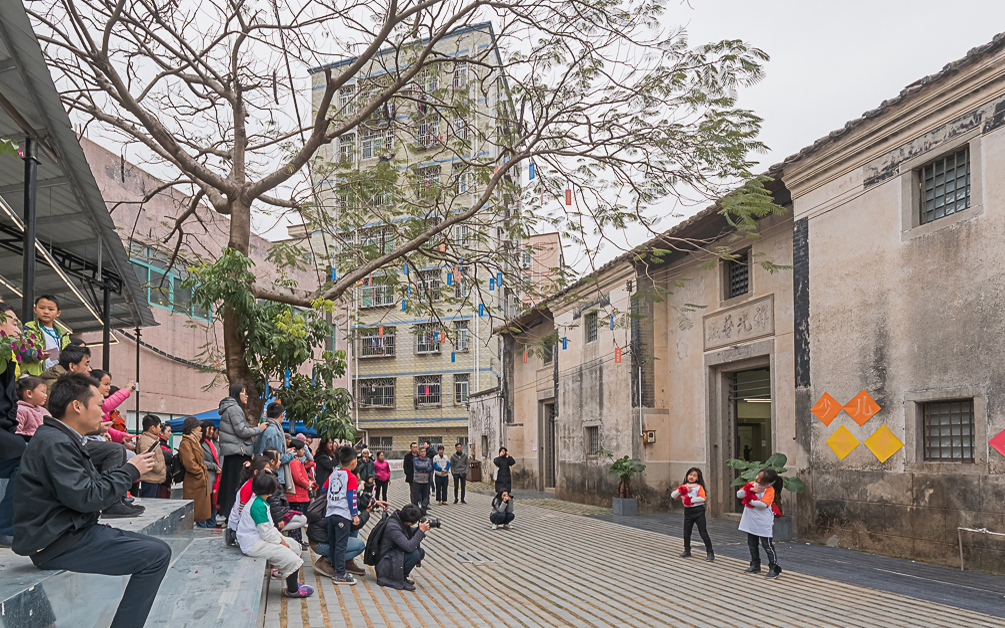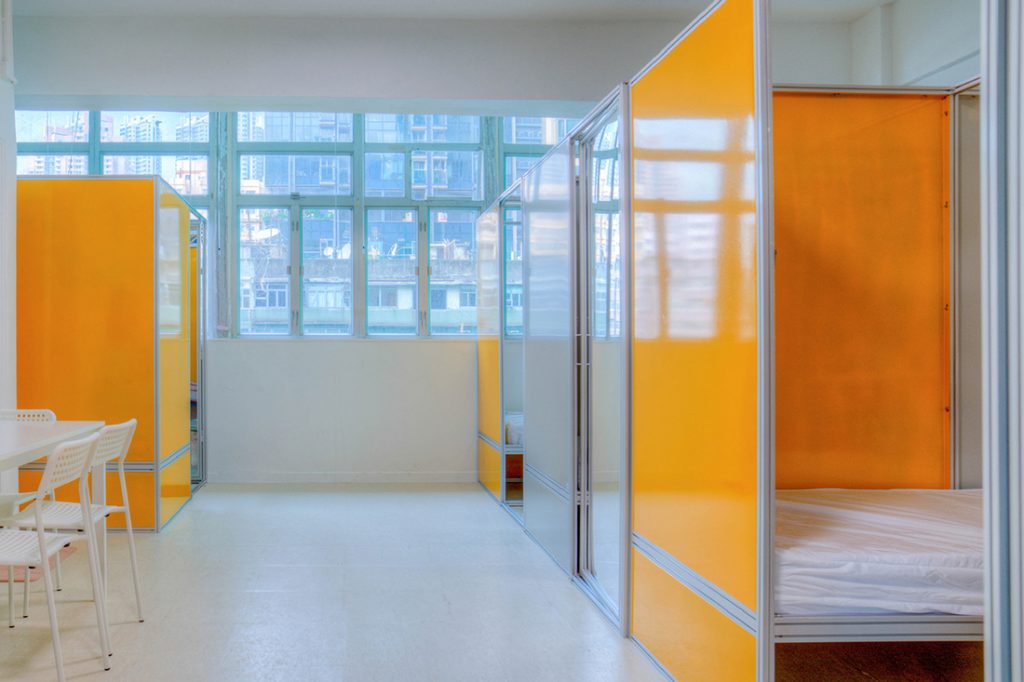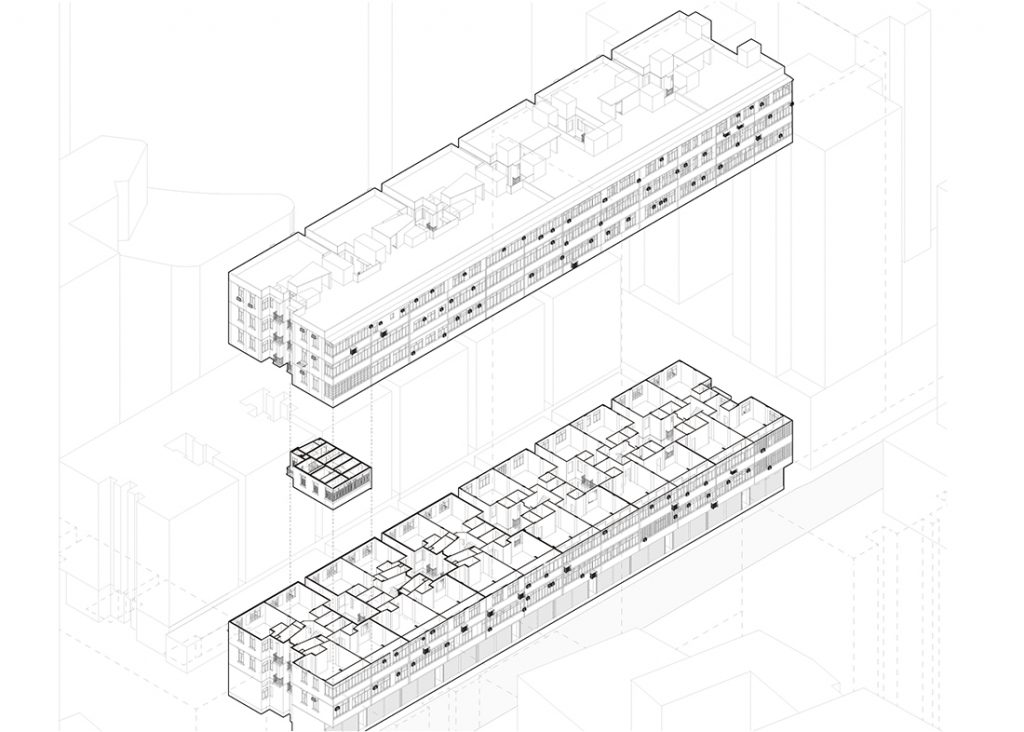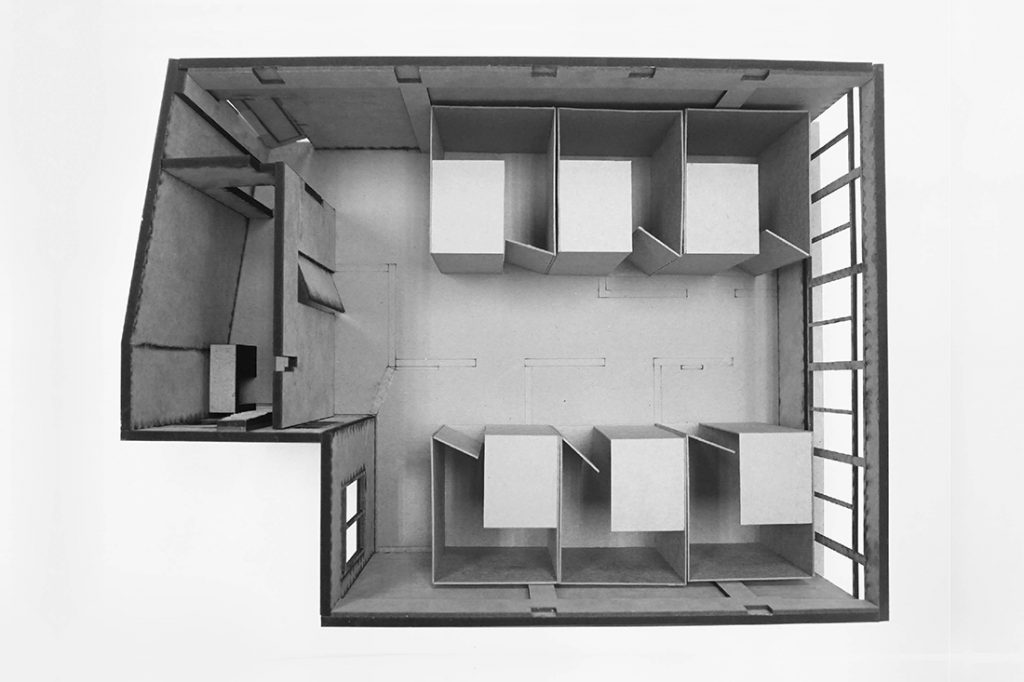
-
16 April 2020
Architect and academic Juan Du has devoted all aspects of her career to the study of urban development in Shenzhen and Hong Kong, and the pursuit of more socially and culturally sustainable outcomes.
.
With experience comes deep insight – and our four INDE.Awards Luminaries of 2020 have it in spades. Hailing from Indonesia, Hong Kong and Australia, their stories of practice through the years reveal not only their own drivers but also facets of context. Through their stories, we find windows to the conditions in which they practice – how things are, and how they hope things will be in future.
Each story is unique as written by the architects and designers in their own words. It is an honour to share their journeys with you in a series of articles.
Hong Kong-based Juan Du is Principal at architecture studio IDU, Associate Professor at The University of Hong Kong (HKU), and Director of HKU’s Urban Ecologies Design Lab. Here, she shares insights into how her research and practice have contributed to a re-evaluation of urban villages in Shenzhen and subdivided units in Hong Kong, raising the prospect of a better life for marginalised communities.
.
Reflecting on a Career
A pursuit of interdisciplinary work that draws upon the diverse methods and knowledge of architecture – from theory to practice – has shaped my career.
After a decade of post-graduate professional practice in the US, Europe and China, I established my own office in 2006 and embarked on a parallel academia-and-practice career with projects ranging from built forms to the social and ecological processes of the city. My academic post as Associate Professor and Associate Dean of Architecture at the University of Hong Kong has also allowed me to conduct in-depth research on urgent architectural and social problems, and then apply the scholarly knowledge through teaching and practice.

The Shenzhen Experiment (book, 2019, published by Harvard University Press). Image: Juan Du, HUP
My focus on China’s urbanisation process forms the theoretical foundations that challenge conventional modes of urban development in order to generate a more socially and environmentally responsible practice through progressive design.

The Shenzhen Experiment (book, 2019, published by Harvard University Press). Image: Juan Du, HUP
In 2006, I won first place in an international urban planning and design competition organised by the Shenzhen Urban Planning Bureau for the urban redevelopment of the city’s Huanggang Urban Village – a 50-hectare migrant-worker enclave located in the city’s central business district. Over the following two years, an urban plan was further developed along with the government and village to prevent the total demolition of the urban village while still allowing for incremental urban development.
This project kicked off over a decade of sustained professional and intellectual efforts to champion the importance of the urban villages and migrant workers, as well as Shenzhen’s indigenous history and culture, which have been largely ignored by conventional representations and narratives of the city’s extraordinary process of urbanisation. The most recent projects include the construction of Shangwei Urban Village Exhibition and Community Center and the publication of The Shenzhen Experiment: The Story of China’s Instant City – a book recently released by Harvard University Press.

The Shenzhen Experiment (book, 2019, published by Harvard University Press). Image: Juan Du, HUP
In 2015, I established the Urban Ecologies Design Lab and initiated ‘Project Home Improvement’ in Hong Kong – a series of community design projects that have provided designs and upgrades for over 100 residents living in subdivided units or ‘cage homes’. This long-term collaboration with social NGOs in Hong Kong has led to the just-completed ‘Friendship Homes’ – a pilot transitional housing project that provides co-living flats to over 20 homeless residents.
Throughout various methods of practice and project types, I found historical and cultural research, construction experimentation, engagement with disadvantaged communities, and social sustainability are the consistent key initiators and motivations.

The Bookshop at Hong Kong Art Museum (2019). Photo: IDU
The Building Blocks of Significance
Having been born in northern China and moved to the American South at age 12, my transcultural and immigrant experiences have influenced my professional and intellectual development. In the first decade of my architectural career from the mid-’90s onwards, I worked in Atlanta, Paris and Beijing, contributing to the design of world-class museums and performing arts centres, as well as bespoke residential and luxury commercial facilities.
While the professional skills and design experiences were invaluable to my own development, I was also frustrated by the limitations of conventional architectural practices, especially after a 2003 Fulbright Research Fellowship in Shanghai had exposed me to the escalation of social inequity and environmental problems of China’s rapid urbanisation.

Project Home Improvement (2015-2018, with community partner Caritas Aberdeen). Image: Leon Suen, UEDL
Driven by a sense of urgency and social responsibility, I transplanted myself to the previously unfamiliar-to-me Pearl River Delta Region, specifically Hong Kong and Shenzhen, to pursue the possibility of an experimental practice that could diversify the reach and impact of design thinking and architectural practice. The experimentations have allowed me to evolve from a scholar-practitioner to a public scholar, and perhaps now a developing activist-practitioner.
From planning and urban design projects of informal settlements in Shenzhen to micro-scale home-improvement efforts for low-income families in Hong Kong, I have continually relied on rigorous research knowledge and striven to push the preconceived boundaries of architecture and urban design. My decades-long research work in the region has contributed to the improvement of scholarly and public understandings of marginalised low-income communities and informal neighbourhoods in Shenzhen and Hong Kong. These works have also contributed to significant changes in public representations and media portrayals, shifts in governmental and institutional positions, as well as created pilot community and housing projects that directly improved the quality of life for affected residents.

Project Home Improvement (2015-2018, with community partner Caritas Aberdeen). Image: Leon Suen, UEDL
My works have represented an alternative mode of architectural practice in the region to the world. Recently I was featured in the Thames & Hudson book New Chinese Architecture: Twenty Women Building the Future. In addition to regional impacts, my research and design works have been widely exhibited and published internationally, from Venice Biennale to CNN. My book The Shenzhen Experiment received positive reviews from diverse media sources, from the Architects Newspaper to Nature and The Wall Street Journal.
From design and construction to research and writing, I strive to present and impact the built environment with nuances, complexity and humanity, in order to contribute to better understandings of our cities that transcend disciplinary divides, cultural differences and nationalistic boundaries.

Project Home Improvement (2015-2018, with community partner Caritas Aberdeen). Image: Leon Suen, UEDL
Contributing to Progress
China’s Pearl River Delta holds some of the world’s fastest growing cities that have achieved rapid urban growth and economic success. However, amidst luxury high-rises and high-tech parks, tens of millions people live in so-called urban villages in Shenzhen and subdivided units in Hong Kong – housing conditions mostly produced outside of formal planning and regulations. In addition, buildings in these working-class neighbourhoods face imminent state-backed demolition and the low-income residents are under the constant threat of eviction and displacement.
I was the first to curate a government-organised exhibition that featured urban villages in Shenzhen in 2005. In the years after, in addition to the various community and cultural design projects, I have curated ten-plus public exhibitions, participated in thirty-plus exhibitions, given over eighty public lectures, and authored over forty publications.

Shangwei Urban Village Exhibition and Community Center (2018, with curator F+ Academy and landscape architect Ivan Valin). Photo: Zhang Chao, F+
After over a decade of collective efforts, in 2018 the Shenzhen government’s urban planning policy on urban villages started to change from total demolition and displacement to partial improvement and rehabilitation. This policy shift potentially positively impacts over ten million low-income families and migrant workers currently living in the 200-plus urban villages of Shenzhen today.
Since 2015, this focus on informal settlements has expanded to Hong Kong, and the works are contributing to an increased public awareness and professional knowledge of how low-income and new immigrant families live in cramped subdivided units. I am currently in partnership with non-profits and NGOs to formulate design strategies and housing policy recommendations to improve this phenomenon. Sub-divided units are currently home to nearly one million residents in Hong Kong.

Shangwei Urban Village Exhibition and Community Center (2018, with curator F+ Academy and landscape architect Ivan Valin). Photo: Zhang Chao, F+
A Progressive Future
After decades of rapid growth and economic boom, the social and environmental challenges of the Pearl River Delta region are ever increasing. Due to economic and political pressures, architectural and design practices in general in Hong Kong (and Shenzhen) have not been overtly active in championing societal changes. The best design resources are inevitably utilised by the most economically affluent and politically powerful. However, the long-term effects of social inequity and environmental degradation will inevitably impact all sectors, businesses and classes.

Friendship Homes: Transitional Housing for the Homeless – ‘Before’ (2019, with community partner Society for Community Collaboration). Image: Leon Suen, UEDL

Friendship Homes: Transitional Housing for the Homeless – ‘After’ (2019, with community partner Society for Community Collaboration). Image: Leon Suen, UEDL
In terms of progressiveness, I hope to see more collective efforts by design professionals of the region to explore different ways for our mature and young talents to invest in the mundane and everyday lives of all classes of people.
As we head into an uncertain future of a rapidly urbanising world, many of the challenges of our built environment are complex. Solutions can only be generated through multiple-scale thinking and multidisciplinary collaborations. Conventional disciplinary and professional divides must be revamped in education and practice to address the increasing challenges.

Friendship Homes: Transitional Housing for the Homeless (2019, with community partner Society for Community Collaboration). Image: Leon Suen, UEDL
I am a firm believer in the potential of design to affect positive societal change. The Indo-Pacific region has been on the rise in terms of the global recognition of architecture and design. We should continue to push for the new and innovative while still connect with our rich cultural history, and also ground our works in the diverse socio-economic realities of our collective region.

Friendship Homes: Transitional Housing for the Homeless (2019, with community partner Society for Community Collaboration). Image: Leon Suen, UEDL
.
Thanks to category partner Verosol.
Congratulations to all our Luminaries of 2020. Stay tuned to find out who will be crowned ‘Luminary of the Year’ by our Jury. INDE.Awards 2020 winners will be announced on
14 August!
.
Top image: Juan Du (photo IDU).
